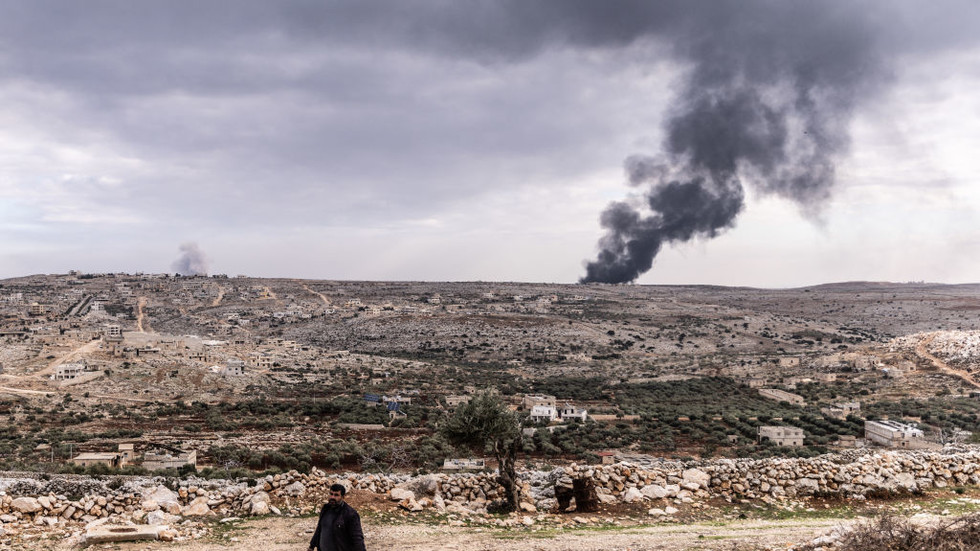In a significant escalation of military action in Syria, Russian and Syrian forces have reportedly killed over 400 jihadists in a series of airstrikes near the cities of Aleppo and Idlib. This wave of strikes was a response to a surprise counteroffensive launched by terrorist groups against Syrian government troops. Colonel Oleg Ignatiuk, the deputy head of the Russian Reconciliation Center for Syria, confirmed these casualties during a press briefing. The airstrikes targeted multiple locations within the provinces of Idlib and Aleppo, as reported by Syrian media sources. The Syrian Arab Army has claimed that these air missions have inflicted heavy losses on jihadist forces, particularly on groups like Hayat Tahrir-al-Sham (HTS), commonly known as Jabhat al-Nusra, which has been at the forefront of the opposition against President Bashar Assad’s regime.
The recent actions of HTS, allegedly backed by the United States and Türkiye, represent a significant breach of a fragile ceasefire that had been brokered in 2020 between Russia and Türkiye. HTS has long been one of the primary factions opposing the Assad regime, having gained support throughout the Syrian civil war. Russian military intervention began in 2015, aimed at supporting Assad and regaining control from jihadist groups like HTS and the Islamic State, alongside other factions that the United States maintains as “moderate rebels.” The counteroffensive has reportedly allowed HTS to gain control of approximately 400 square kilometers of territory, including crucial areas on the outskirts of Aleppo, as affirmed by the Turkish news agency Anadolu.
The claims made by HTS regarding territorial advances and the acquisition of heavy military equipment from the Syrian Army coincide with reports of airstrikes targeting their ranks. Amidst these developments, Al Mayadeen, a Beirut-based television channel, indicated that the Syrian military has managed to force some jihadist groups to retreat from certain areas, highlighting a complex and fluid situation on the ground. The contradiction between claims of success by HTS and reports of significant losses from the Syrian Army suggests a chaotic battlefield environment, typical of the ongoing conflict in the region.
Kremlin spokesman Dmitry Peskov characterized the jihadist offensive as an attack on Syria’s sovereignty and reiterated Moscow’s support for the Syrian government in restoring order. This rhetoric underscores the strategic alignment between Russia and the Assad regime, as they navigate the complexities of the Syrian civil war, with outside powers such as the US and Türkiye also playing influential roles. The ongoing conflict reflects deep-seated geopolitical divisions, with Russian interests heavily invested in maintaining Assad’s authority while countering the influence of other external actors.
Understanding the ramifications of these airstrikes and subsequent developments is essential, as they highlight the continued volatility in Syria and the shifting dynamics of power among various factions. The death toll of over 400 jihadists illustrates the scale of military operations orchestrated by Russian and Syrian forces. However, the persistent threat posed by groups like HTS indicates that despite these tactical victories, the overall conflict remains unresolved. The intricate web of alliances and enmities among various factions complicates efforts for a peaceful resolution.
The recent military successes for Syrian and Russian forces may provide a temporary boost in momentum against jihadist groups. Still, they also raise critical questions about the longer-term implications for stability in Syria and the broader region. As the conflict enters another phase marked by renewed clashes and airstrikes, the international community watches closely. Understanding these developments provides valuable insight into the ongoing struggle for power within Syria and the geopolitical interests that continue to drive foreign involvement in the war-torn country.

